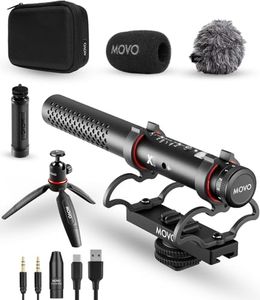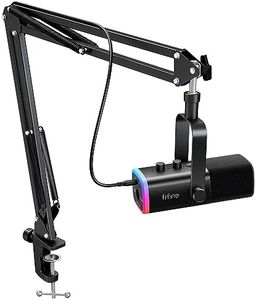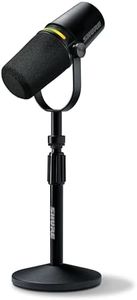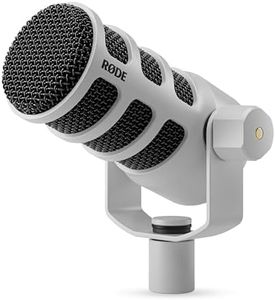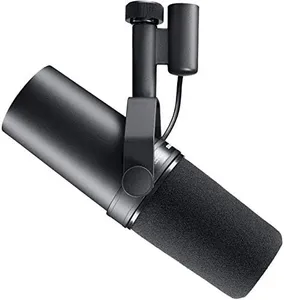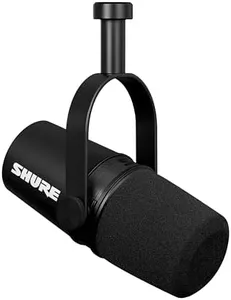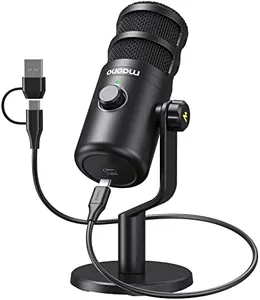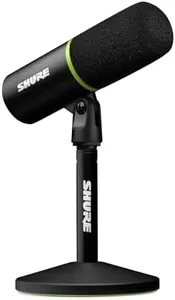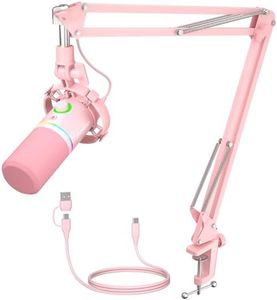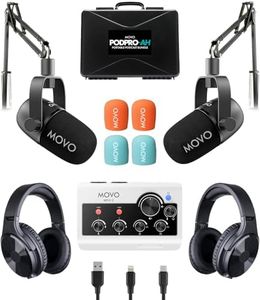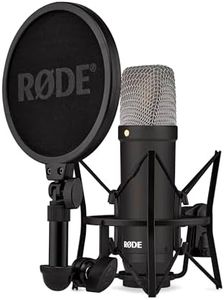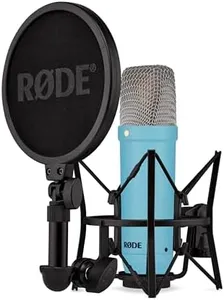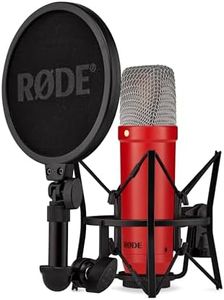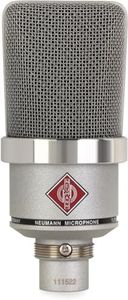10 Best Xlr Microphones 2025 in the United States
Our technology thoroughly searches through the online shopping world, reviewing hundreds of sites. We then process and analyze this information, updating in real-time to bring you the latest top-rated products. This way, you always get the best and most current options available.

Our Top Picks
Winner
FIFINE XLR/USB Gaming Microphone Set, Dynamic PC Mic for Streaming Podcasting, Computer RGB Mic Kit with Boom Arm Stand, Mute Button, Headphones Jack, for Recording Vocal Voice-Over-AmpliGame AM8T
Most important from
4237 reviews
The FIFINE XLR/USB Gaming Microphone Set, model AMPLIGAME AM8T, is designed for gamers, streamers, and podcasters. One of its major strengths is its versatility in connectivity, offering both USB for simple plug-and-play use with PCs and XLR for more professional setups with mixers or sound cards. This makes it adaptable to different recording environments and needs. The customizable RGB lighting adds a vibrant touch to any gaming setup, which can be easily controlled with a simple tap.
The cardioid polar pattern and -50dB sensitivity help in focusing on your voice while minimizing background noise, which is essential for clear voice recordings and streams. The boom arm stand included in the kit is both durable and adjustable, providing stable support for the microphone during use. Additional features like the mute button, gain knob, and real-time monitoring through the headphone jack add to the convenience and control, making it easier to achieve high-quality recordings.
The build combines sturdy metal and ABS plastic, ensuring durability. This microphone kit is particularly well-suited for gamers and streamers who require reliable performance and ease of use. Despite minor drawbacks, the FIFINE AMPLIGAME AM8T offers a robust solution for high-quality audio recording and streaming.
Most important from
4237 reviews
Shure MV7+ Podcast Dynamic Microphone with Stand – OBS Certified, Enhanced Audio, LED Panel, USB-C & XLR Outputs, Auto Level Mode, Digital Pop Filter – for Podcasting, Streaming, and Recording, Black
Most important from
3886 reviews
The Shure MV7+ is a solid choice for podcasters, streamers, and content creators looking for clear and professional sound. It uses a unidirectional polar pattern, which helps focus on your voice while reducing background noise — ideal for recording in less-than-perfect environments. The microphone’s built-in digital signal processing (DSP) and voice isolation technology work together to minimize unwanted sounds like room echo and fan noise, so your voice comes through clean and sharp.
Thanks to its flexible USB-C and XLR connectivity, the MV7+ easily adapts from beginner setups to more advanced studio rigs. The included desktop stand adds convenience for table use. Its sensitivity level is good for capturing voice detail without picking up too much ambient noise. The metal build offers durability, making it a reliable tool for regular use. One standout feature is the LED touch panel, allowing you to mute quickly and customize the mic’s appearance with many colors. The updated Auto Level Mode adjusts gain automatically based on how close you are to the mic, which helps maintain consistent volume without manual tweaks. A digital pop filter also smooths out harsh sounds from plosive consonants, improving recording quality.
The microphone offers many professional features like onboard reverb effects and app control for fine-tuning, but it weighs about 3.5 pounds, making it less portable than some lighter options. Also, the multiple settings and app integration might feel a bit overwhelming for complete beginners. The Shure MV7+ is a versatile, well-built microphone that balances ease of use with powerful audio enhancements, making it a great fit for anyone serious about podcasting, streaming, or recording at home or in a studio.
Most important from
3886 reviews
RØDE PodMic USB Dynamic Broadcast Microphone with XLR and USB Connectivity for Podcasting, Streaming and Content Creation (White)
Most important from
7821 reviews
The RØDE PodMic USB Dynamic Broadcast Microphone offers a blend of traditional and modern connectivity with both XLR and USB-C options, making it versatile for various recording setups. This feature is particularly beneficial for podcasters, streamers, and content creators who may need to switch between different devices easily. Dynamic microphones typically have a cardioid pattern, which is good for focusing on sound from one direction and reducing background noise, a plus for recording in less-than-ideal environments.
RØDE microphones usually offer a broad and flat response, ensuring the capture of a natural and clear voice reproduction. The robust all-metal construction and internal shock mount make it durable and resistant to handling noise, while the built-in and external pop filters effectively manage plosive sounds, ensuring clear audio. The integrated DSP effects available through the RØDE Central app, including APHEX Aural Exciter and Big Bottom processors, add value by allowing users to enhance their recordings easily.
The zero-latency headphone monitoring feature with dedicated volume control is a valuable addition for real-time audio feedback. However, at nearly 2 pounds, it is relatively heavy for a handheld mic, which could be a drawback for some users. This microphone is well-suited for podcasters, streamers, and content creators looking for a reliable and versatile recording solution.
